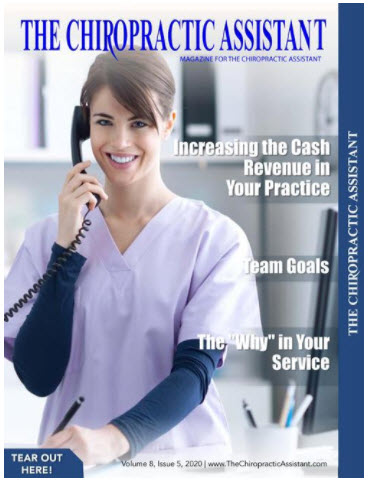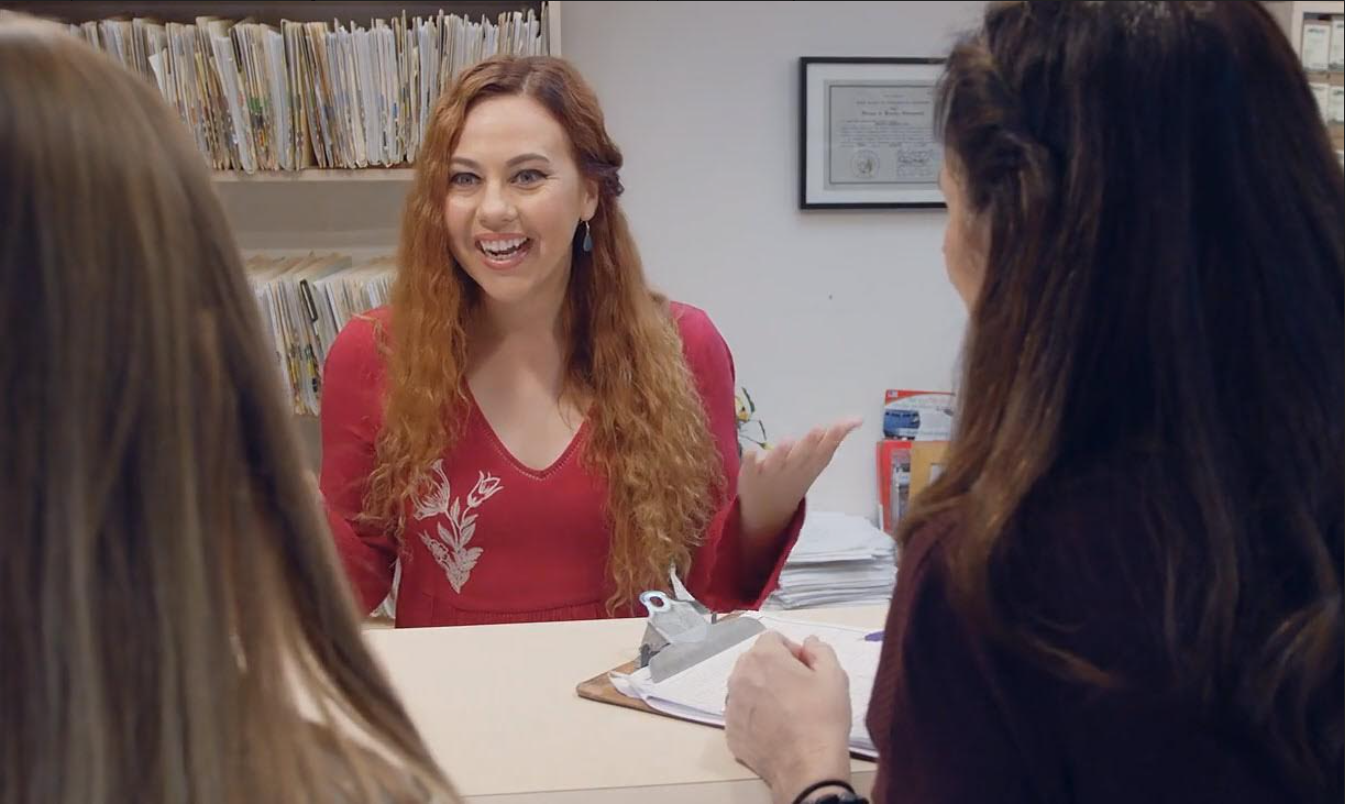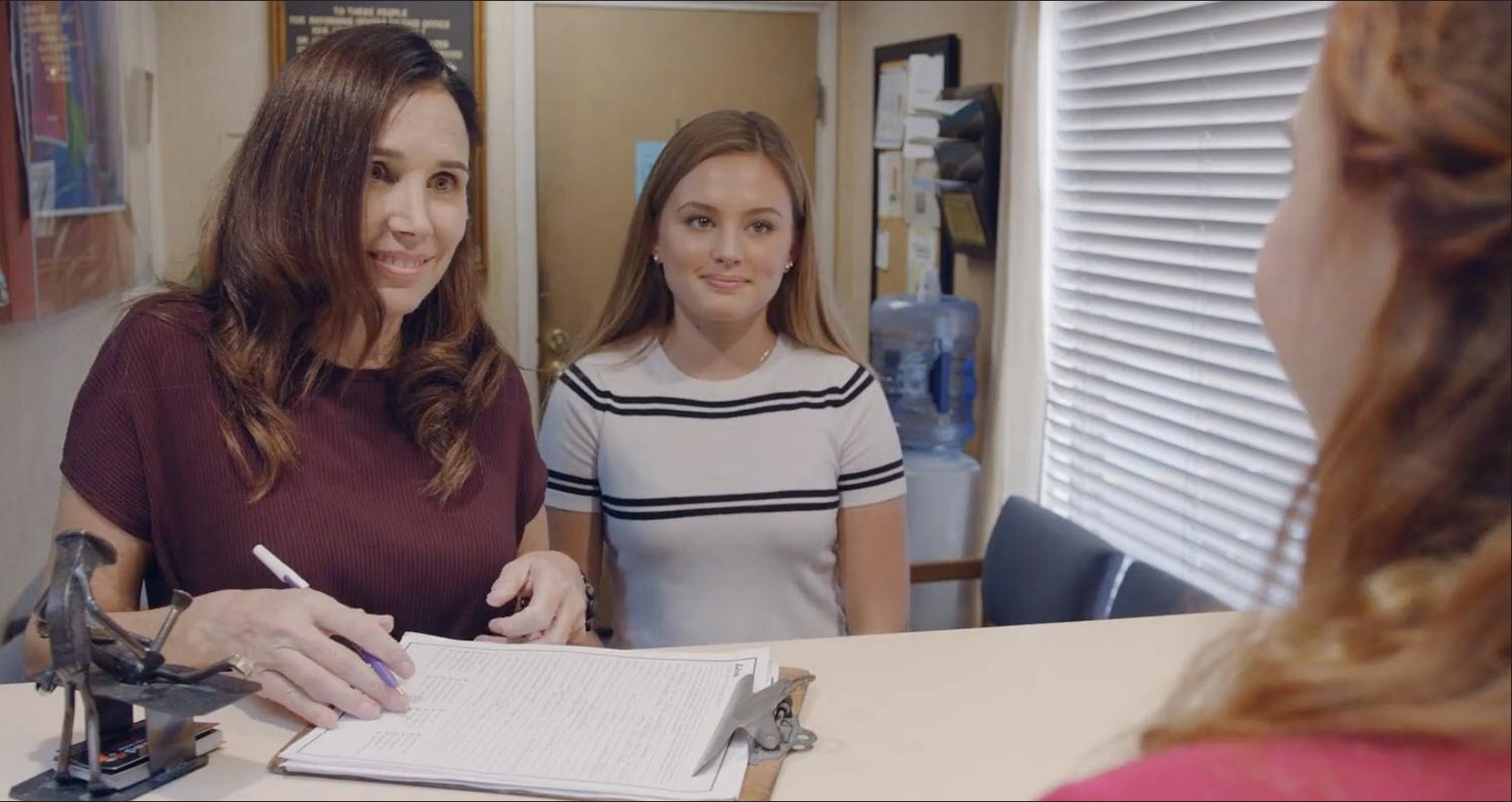How to Improve Your Patients Financial Experience
Posted on October 6, 2020 by Holly Jensen

The original article was featured in volume 8, issue 5, 2020, of The Chiropractic Assistant.
For almost two decades, I’ve had the pleasure of training thousands of chiropractic offices all over the United States, and when it comes to the patient’s financial experience, I’ve seen it all: The good, the bad, and the ugly.
It’s critical that patient finances are handled properly or you may run the risk of ruining their entire chiropractic experience. When done right, the impact that the financial experience will have on your practice may include the following side-effects: Increased patient loyalty, higher cash collections, patient satisfaction, referrals, and less work for you and your team!
Let’s first talk about the ugly part of patient financial experiences. If you’re doing any of the following, I urge you to stop! Then, I want you to think about how it may have impacted your conversations with patients. Think about how it may have caused a disgruntled patient. Think about how it may have impacted the patient’s care.
Unhappy To Help = Lost Revenue
One of the easiest ways to cause a patient to question their decision to come to your practice is the tone of the very first call that they make to your office.
CA: “Doctors office, how can I help you?”
Caller: “How much does it cost to see the doctor?”
CA: “It depends on the type of care that you need, which only the doctor can determine. We offer a consultation with the doctor at no charge. What time would you like to come in?.”
Caller: “Ok, thanks. I’ll think about it and call you back.” (Hangs up)
I can’t tell you how many times I have mystery shopped a chiropractic office and heard something like the above scenario. It makes me cringe at how bad this call was handled. Here’s why:
- No happy-to-help greeting
- No mention of the office name
- No mention of the CAs name
- The caller was not asked for their name or number
- The patient’s question about cost was not answered
- No offer of times to come in for the appointment, it was left up to the patient as to when they could come in
As you play out that call scenario in your head, I want you to think about how the caller would feel. What impression do you think the caller was left with about the way the CA handled the call? About the practice? About the type of care they would receive in the office? I can promise you that when the caller hung up the phone, they called the next office, or worse, they decided they were okay without chiropractic care!
One of the most important jobs that we have as CAs is to make the very best impression in person or on the phone for each and every person we interact with. We only get one chance to make an impact with potential new patients so we must make it great. We want the patient to feel like the experience they have on the first call and office visit is a true reflection of the amazing care they’ll receive.
So what does this have to do with the patient’s financial experience? First impressions will set the tone. If you can’t be clear and upfront about costs during a phone call, people will see through that. They may feel like they can’t trust you because you’re hiding something.
They may also feel that they may not be able to afford to come in because you’re afraid to tell them how much it cost. And, I can bet that the office in the above scenario has collection problems. Why? Because if the CA can’t talk about money on the first call, they most likely have trouble talking about money with other patients as well.
Happy To Help = Increased Revenue
Now, let’s dive into how this call could have been handled in order to gain the trust of the caller and get them to come in to your office as a new patient:
CA: (Cheerful tone) “Thank you for calling the Chiropractic Wellness Center, this is Holly. Who do I have the pleasure of speaking with?”
Caller: “Hi, Holly. My name is Amber.”
CA: “Hi Amber, how may I help you today?”
Caller: “I wanted to find out how much it costs to see the doctor.”
CA: “Amber, I’m happy to help you with that. Can I ask when was the last time you saw the doctor?”
Caller: “I’ve never been there before.”
CA: “Oh, no problem. Who can I thank for referring you to our office?”
Caller: “My friend Samantha Smith.”
CA: “Oh gosh, we love Samantha! I’ll be sure to thank her for referring you to us. Amber, what’s your last name, phone number, and email address?
Caller: “Jones and my number is (555) 555-5555. My email is amber@email.com”
CA: “Thank you, Amber. As for the initial consultation, there is no charge for you to meet with Dr. Miles. At the consultation, he will determine if he’s the right doctor for you – meaning whether he thinks he’ll be able to help you or not. If he’s not, he’ll help you find the right doctor.
If recommended by Dr. Miles and you choose to proceed, an exam and x-rays would at most be $X. Chiropractic adjustments are $X. And Amber, I want to mention that we also offer affordable payment plans which work for most of our patients! If this sounds good with you, I have a few questions for you before I look at the schedule.”
Caller: “Ok. That sounds good.”
CA: “Great! So, Amber what seems to be the problem you’re having?”
“How long has this been troubling you?”
“Sounds like this is really bothering you! Let’s see if we can get you in right away.”

“Scene of CA reviewing care plan from “The Calling
Movie – A True Story” – Watch for free!
CA: “Amber, we have special times set aside for new patients. Do you prefer mornings or afternoons?”
Caller: “Mornings”
CA: “Ok, we can see you tomorrow at 7:30 a.m. or 9:50 a.m., which do you prefer?”
Caller: “9:50 a.m.”
CA: “Ok, Amber, I have you scheduled for tomorrow morning at 9:50 a.m. Do you know where we’re located?”
Caller: “Yes, at 12345 Main Street.”
CA: “Great! I’m going to send you an email in a few minutes with a link to access the new patient forms so that you can fill them out before your appointment. Again, my name is Holly and we look forward to meeting you tomorrow at 9:50 a.m.”
I’m sure that you would agree that this caller has a great impression of our office. Let’s peel back the layers and discover why this call was handled better:
- Cheerful, happy-to-help tone
- Office name mentioned
- CA’s name mentioned
- The caller was asked for name, number, and email
- The caller was made to feel good about the person who referred her
- The CA likely gave the patient a feeling of trust by letting her know if she was not in the right place for care, the doctor would help her find the right place
- The costs were clearly addressed and the CA also mentioned affordable payment options should the patient choose to proceed with care
- The CA used an empathetic tone when asking the patient about her reasons for coming to the office
- The patient was told of special appointment times and offered no more than two appointment choices, making it easier for a time to be chosen
- The office location was confirmed
- The CA told the patient to expect an email
- The CA let the patient know that she was looking forward to meeting her
As you play out this second call scenario in your head, I want you to think about how the caller would feel. What impression do you think the caller was left with about the way the CA handled the call? About the practice? About the type of care they would receive in the office?
I can bet that when the caller hung up the phone, they felt a sense of hope. The new patient was clear on the cost and was likely looking forward to coming into the office. Most importantly, the CA made a great impression, started to build rapport with the patient, and is helping to cultivate this patient’s loyalty to the office.
How do we keep up this momentum when it comes to the patient’s financial obligations once they come in? Let’s fast forward to the new patient coming in for their first visit. An exam and x-rays were performed and the patient is at the front desk checking out. The CA needs to collect money and schedule the next appointment:
CA: “Amber, I’m so happy Dr. Miles is able to help you! Before we schedule your next appointment, I’ll collect the amount for the exam and x-rays. The total is $X.”
[Patient pays]
CA: “Thank you, Amber. For your convenience, we will email you a copy of your receipt. Please let me know if you ever need a receipt printed out. Now, for your next appointment, do you prefer mornings or afternoons?”
The CA schedules the next appointment and because money was handled before scheduling, the patient is not thinking about paying as the last thing they did in the office. They’re leaving the appointment happy.
Get the money out of the way first so that you can focus on the patient’s experience in your office. This should be the rule of thumb with each and every patient.
Presenting Care Plans = Automated Payments
When the patient has said yes to the doctor’s treatment plan, the next thing is to get their permission to discuss money before anything else. If you do not get the patient’s permission, you’ll run the risk of coming off like a salesperson. It’s best handled like this:
Doctor: “I’m ready to give you your first adjustment today. All we have left to do is go over the cost of the program. We’re prepared to do that with you today or if you prefer, we can do it on your next visit. Which would you prefer?” Let them answer. Most people will say, “Do you have time to go over it now?”
That’s it! It really is just as easy as that! This is how we get permission to talk about the patient’s financial obligations to the office for their care plan. 99% of patients will want to do it right then. And now that we have their permission, they feel like they’re in control so they’re not thinking, “Here comes the sales pitch.”
Next, the doctor will warm the patient up to the CA coming in and going over the cost of care. The CA has a custom care plan already created and printed and sits down with the patient in a private area, away from any other patients who may overhear. Most people are not comfortable talking about money in front of others, so do your best to make the financial experience a good one for them.
Check out the Care Plan Calculator System!
Doctor: “Holly will be in shortly to go over our payment plans. Before she does, I just want to let you know that you don’t have to pay for your care in the way that she’s going to go over. However, I would highly recommend that you do because it covers everything that I recommended and it’ll save you the most money. Wait one moment and I will send her in.”

Movie – A True Story” – Watch for free!
CA: “Amber, I want to go over the plan for your care right now. Before I do, I just wanted to let you know you do not have to pay for your care this way. However, this is definitely the most affordable way to get the care you need. When we create a plan for a patient, we’ll itemize the care you need and apply some discounts. Is that ok?”
CA: “Here you can see the list of services you’ll need. We need X adjustments, X re-exams, etc. Here you can see the total value as if you paid visit by visit. When we create a corrective care plan, we include all the services Dr. Miles recommended and this is how much you will save.”
CA: “We then give you three payment options. Option 1 is that we split the total into monthly payments. The second option is our most popular and we’ll give you an additional 5% discount by making a down-payment followed by monthly payments. The third option is that we give you another 10% off and you pay the whole amount upfront. This option saves you another $X.”
CA: “Amber, before I go through the remainder of your program, does it sound like one of these options will work for you?”
Once they tell you, “Sure I can do one of those,” you might ask, “Do you have an idea of which one? Then I can explain the rest of the program more clearly.” It doesn’t really matter if they do at this point. It’s just nice to know if they do so you can skip anything that doesn’t apply.
Next, you’ll explain how their monthly payments are handled.
CA: “Amber, if you choose option 1 or 2, which both involve monthly payments, we’ll securely save either a credit card or bank account on file and auto-debit your payments each month. It keeps it very simple and easy. Do you have any questions?”
Address any questions and then wrap up. Let them know that while they’re getting their first adjustment, you’ll take their credit card and set up the plan. Then, you’ll meet them back at the front desk when they’re done with the doctor.
Back at the front desk, the patient has now returned.
CA: “Amber, congratulations on beginning your wellness journey with us! Now, I have a few things to go over with you. First, we need to take care of your agreement. Please electronically sign here. Your future payments will be automatically drawn on the X day of the month. If you ever need to update your billing information, please let us know. Now, let’s get your next appointment scheduled.”
The CA should now schedule standing appointments on the same days and times until instructed by the doctor to change the frequency.
I want you to imagine how this experience would impact your patient. They can come in for care and not have to worry about money because their monthly payments are being automatically processed per the financial agreement. The patient is then able to focus on the chiropractic experience.
I want you to imagine the impact that not having to talk about money over and over again with each patient has on the practice. Your time has been freed up and you’re able to put more focus and attention on all of the other things that you have to do.
You’re more joyful, you take pride in your work and you’re able to better connect with patients. The cash revenue in the practice has increased. Patient loyalty has increased because you’re focused on the patient’s chiropractic experience. Now get out there and let’s improve the patient’s financial experiences!
Check out our other articles!

